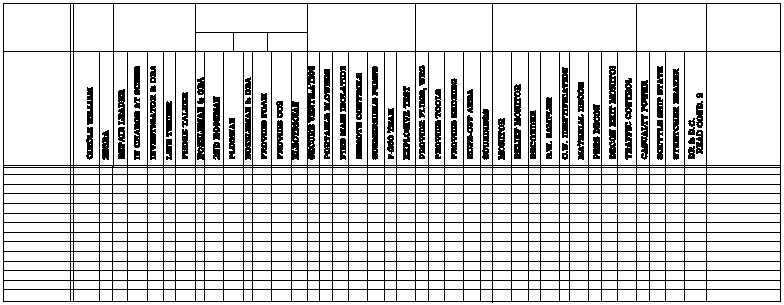accurate, and rapid communications should take
place between all damage control parties, fire-fighting
parties, or similar groups so that overall coordination
of effort and direction can be accomplished. The
primary damage control battle organization repair
parties and teams are shown in figure 7-2.
The primary duty of the damage control
organization is to control damage in order to keep the
ship fighting. Damage control objectives are attained
by taking the necessary action to do the following:
1. Preserve stability
2. Preserve watertight integrity (buoyancy)
3. Control list and trim
4. Maintain effective segregation of vital systems
5. Prevent, isolate, combat, extinguish, and
remove the effects of fire
6. Detect, confine, and remove the effects of
nuclear, biological, and/or chemical attack
7. Assist in the care of injured personnel
8. Make rapid repairs to structures and
equipment
Ships designate one of the repair parties to act as
SECONDARY DCC. The repair party designated as
secondary DCC maintains status boards and
communications logs identical to those maintained by
DCC; it also directs control of damage in the event
DCC is unable to perform its function.
FUNCTIONS OF DAMAGE
CONTROL CENTRAL
Damage control central (DCC) is the hub of the
ship’s damage control efforts. It is organized to
coordinate control of all damage the ship may suffer
in battle, and it keeps the commanding officer
advised of the capabilities of the ship after each
casualty. It trains repair parties to operate and
control damage as independent units.
DCC personnel check all damage reports and the
corrective action being taken. DCC issues directions
when repairs are not progressing satisfactorily,
damage is beyond the capabilities of the personnel
involved, advice is requested, or corrective action in
progress is incorrect.
DCC maintains status boards showing struc-tural
damage, location of flooding boundaries, condition of
propulsion, condition of electrical and casualty power
circuits, and corrective actions taken.
REPAIR PARTIES AND TEAMS
Each ship will have at least one repair party.
Some ships have as many as eight repair parties. In
addition, larger ships may have an ordnance disposal
team, a crash and salvage team, or an aviation fuel
repair team. Each repair party will have an officer or
a senior petty officer in charge. Composition of repair
parties depends on the number of personnel
available, type of ship, and area of responsibility. A
repair party organization chart is shown in figure 7-
3. All repair parties should have the following
capabilities:
Making repairs to electrical and sound-
powered telephone circuits.
FIRE FIGHTING
DAMAGE
NO.
GO
EVALUATION
FLOOD AND
CONTROL NBC DEFENSE MISC ASSIG REMARKS
CLO
AND COMM
A
B C
SMOKE CONTROL
REPAIR
NAME
Figure 7-3.—Repair party organization chart.
7-5

